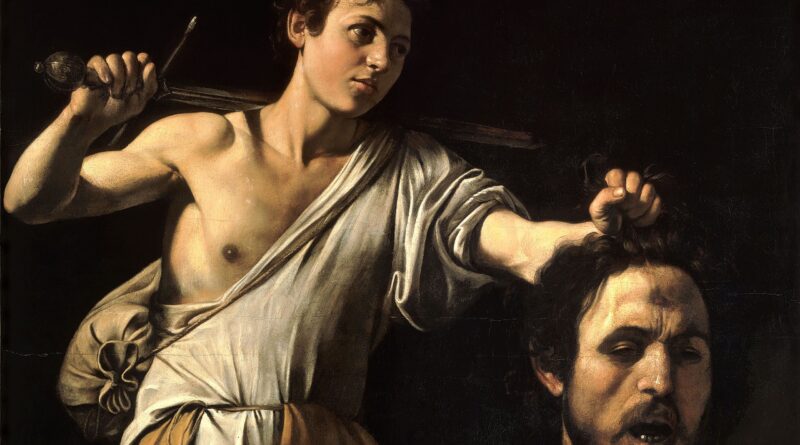Michelangelo Merisi da Caravaggio (1571–1610) was, without a doubt, the most influential painter of the Baroque period. He was also a feisty Bohemian who was frequently imprisoned for brawling and forced to flee the law and his adversaries, escaping to Naples, Malta, and Sicily. His “travels” aided in propagating his remarkable style, which was quickly replicated throughout Europe.
Caravaggio used more raw naturalism in his work than any other artist before him, employing familiar people as models for saints and apostles, which surprised many of his contemporaries. In addition, he heightened the drama of his religious settings by casting a diagonal light across his characters, illuminating parts of their features (to emphasize specific emotions and acts) while leaving the rest in shadow.
His work spanned from still life and genre themes to religious narratives. The level of realism practiced by Caravaggio in his art was not always well received. It was called “sacrilege, filthy, and nasty” to depict holy figures as he perceived them as people. Caravaggio’s chiaroscuro is what quickly identifies him. His figurines are positioned against a black backdrop and illuminated by a single light source. This resulted in the stark contrast between light and dark. Figures are lighted in the same way that performers on a stage are. Here’s a list of some of Caravaggio’s famous paintings.
Boy with a Basket of Fruit (1593)
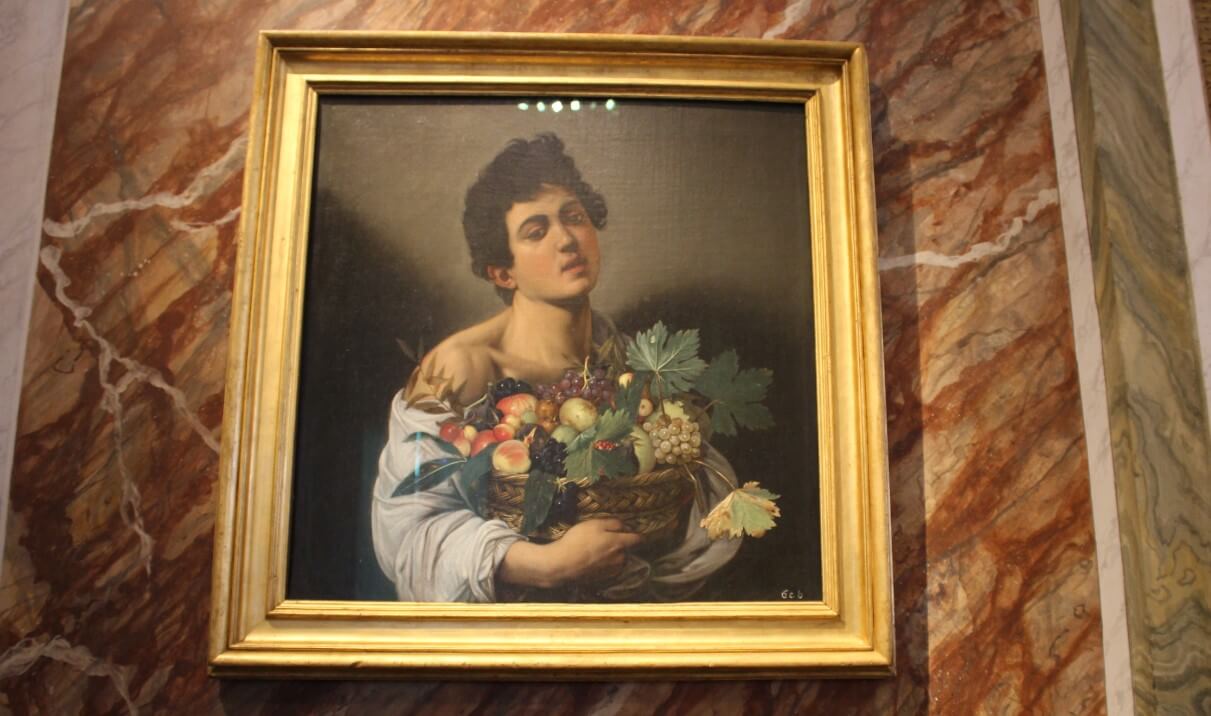
source: pinterest.com
The ripe fruit represents youth and fertility and corresponds to the youthful guy in the image. It is also regarded as a sign of temptation, referring back to the Biblical story of Adam and Eve. Some art scholars argue that Caravaggio was simply painting “something lovely” that he knew viewers would appreciate early in his career.
The painting emphasizes sensuality, evidenced by an attractive street lad striking a seductive position, dipping his head slightly, lowering his shirt off one shoulder, and gently pushing his basket to himself. The silky color of peaches and glossy apples, as well as dark stains on the fruits and dry leaves, were expertly captured by the artist. Caravaggio created the rest of the fruits in neutral colors to give a harmonious look. The brightest fruits are apples, and the painter Caravaggio depicted the rest of the fruits in neutral hues to make everything look harmonious. After all, if Caravaggio used many vivid colors, the viewer’s attention would be drawn solely to the fruit, and the main character would be overlooked.
The artist devoted close attention to color and light. It is quite apparent that the light falls on the left side of this image. After all, the brightest spots on the young man are on his left cheek and shoulder. On the other hand, the shadows fall on the right side of the artwork. The artwork’s background is a typical gray wall. The artist primarily showed a man in a room rather than in nature so that the fruit does not blend in with the natural setting.
Head of Medusa (1596-97)
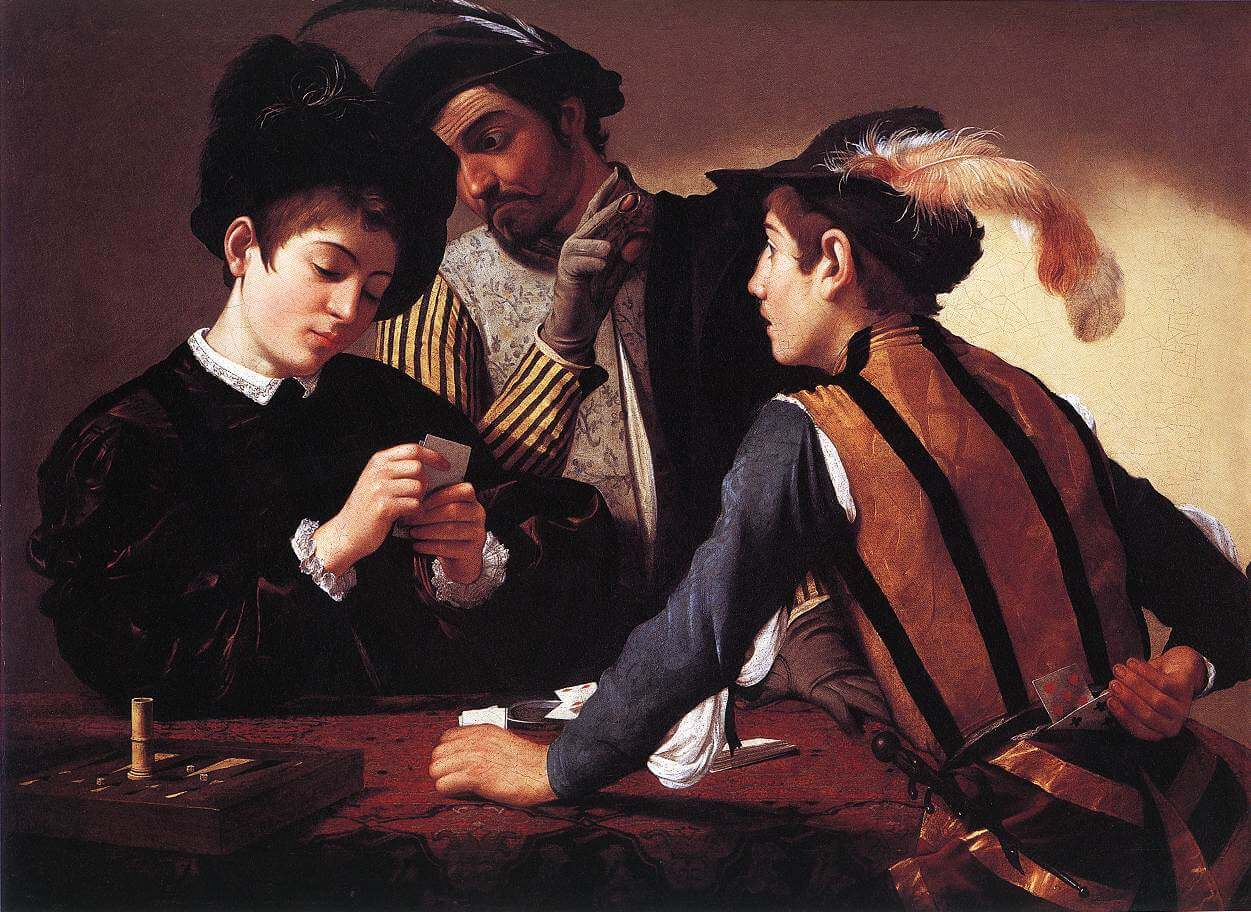
source: caravaggio.org
Medusa was a Gorgon monster, a frightful female figure from Greek mythology. While tales of Gorgons vary across Greek literature, the name most usually refers to any of three sisters with live snake hair and a frightening countenance that turned those who saw it to stone. While two of the Gorgons, Stheno, and Euryale, were immortal, their sister Medusa was not. And she was slain by the mythical hero Perseus, the fabled founder of Mycenae and the Perseid dynasty.
Perseus, who used a mirrored shield to prevent direct eye contact, killed her, according to the myth. However, Medusa’s chopped head remained to frighten people who saw it after she died.
Caravaggio’s Medusa is available in two forms, the first created in 1596 and the second likely in 1597. The earliest version (1596) is also known as Murtala, after poet Gaspare Murtola (d. 1624), who said of it, “Flee, lest if your eyes are petrified in awe, she will turn you to stone.” A private individual owns this work. The second form, pictured below, is slightly larger (6055 cm) and unsigned, though it is sometimes dated 1597. This piece is housed in Florence’s Uffizi Gallery.
Caravaggio experiments with this idea by modeling himself for Medusa’s face, making him the only one safe from Medusa’s vengeful glance, needing to look at his reflection to paint the shield in the same way that Medusa caught her image moments before she was killed. Even though Caravaggio represents Medusa with her head cut, she is still cognizant. Through Medusa’s strong expression, he heightens this juxtaposition of life and death. Her surprised eyes and wrinkled brow all imply a sense of astonishment, as though she imagined herself invincible until the moment. On the other hand, Caravaggio’s Medusa does not have the full effect of frightening the viewer since she does not look at us, passing the power of the gaze to the viewer and highlighting her mortality.
The Calling of Saint Matthew (1600)
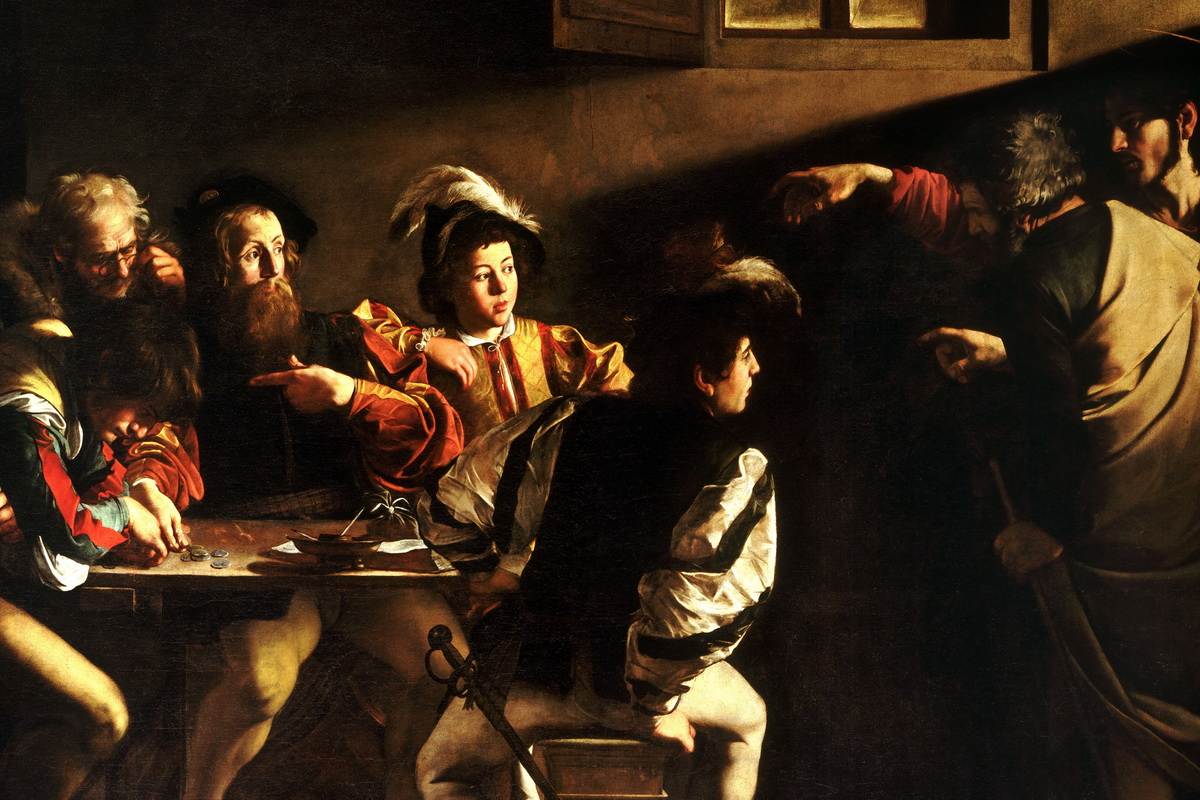
source: pinterest.com
The Calling of Saint Matthew shows the scene from Matthew 9:9 in which Jesus passes by Matthew, a tax collector, and tells him, ‘Follow me.’ Matthew (also known as Levi) did so and became one of Jesus’ twelve disciples. When religious leaders criticized Jesus for hanging out with tax collectors, he replied that he was there to help sinners, not the pious. While the narrative may appear simple, it demonstrated that even the most despised people might be rescued and welcomed to follow Jesus.
The Calling of Saint Matthew is split into two parts. The figures on the proper form a vertical rectangle, while those on the left form a horizontal block. The two sides are further separated by their apparel and, figuratively, by Christ’s hand. The figures in The Calling of Saint Matthew are similar, if not identical, to those in other works, such as Cardsharps.
This picture appears to have presented issues for Caravaggio in terms of size, and he utilized it to devise a way to paint massive, sophisticated multi-figure compositions from life. The creator’s use of light and shadow brings drama to this painting while giving the figures a sense of immediacy. Many other artists followed Caravaggio’s lead and imitated his method.
The characters are shrouded in the shade, and the only thing that brightens the canvas is the blazing light that shines across the wall and underlines the fact of St Matthew and the seated group. Caravaggio brings this canvas to life with vibrant colors, striking contrasts of reds, golds, greens, and various textures, including velvets and soft fur. He contrasts gestures and expressions as well.
The Beheading of St. John The Baptist (1608)
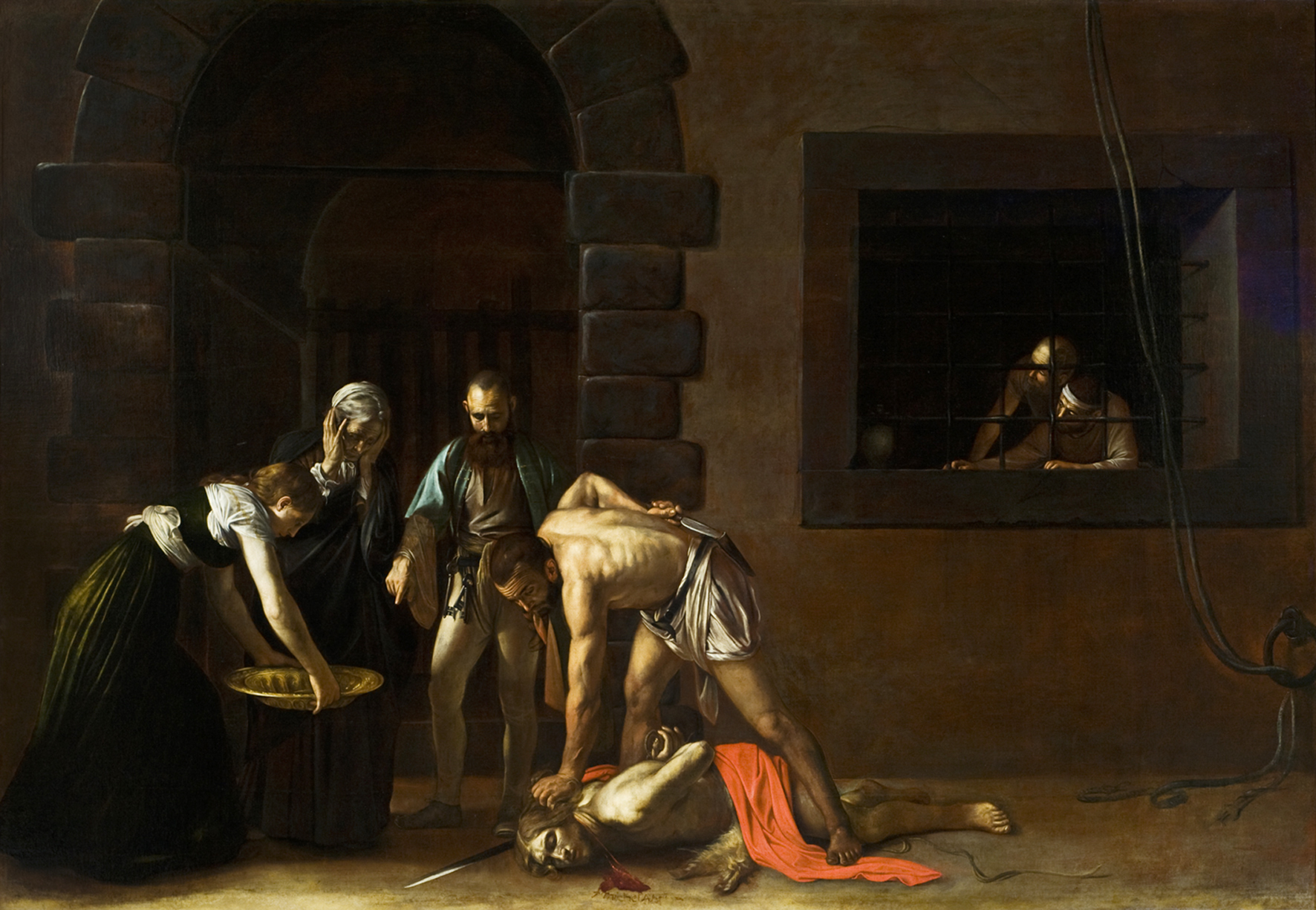
source: pinterest.com
The Bible doesn’t go into much detail concerning John the Baptist’s death. However, according to the Gospel of Luke (3:1920), Herod Antipas imprisoned and decollated John for criticizing his adulterous relationship with his brother’s wife, Herodias. Mark (6:1728) and Matthew (14:311) each add that Herod feared the Baptist and was hesitant to execute him and that the beheading took place in jail at a feast.
The masterpiece Beheading of St. John the Baptist by Michelangelo Merisi da Caravaggio is unlike any other depiction of the scene in art history. It comes to a halt at a remarkably exact point when John’s head is not completely torn from his body. The concentration on the specific details of his murder act is frequently viewed due to Caravaggio’s personal experience with violence.
Caravaggio has reworked the Baptist’s traditional qualities in a refined and sensitive manner, employing realistic detail to portray the story in his unique style. The absence of haloes and angels does not diminish the image’s holiness.
David with the Head of Goliath (1620)
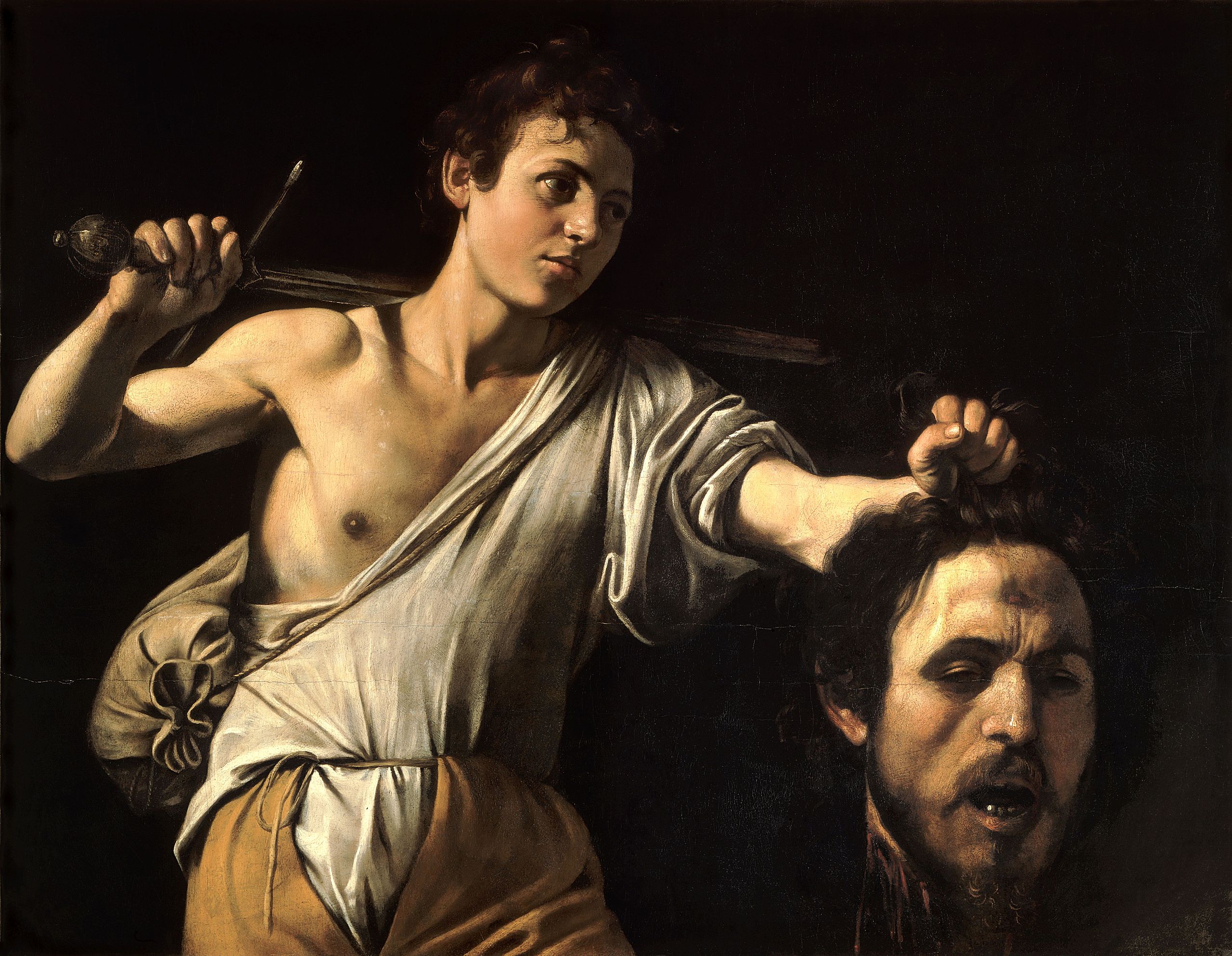
source: wikimedia.org
According to art historians, Caravaggio’s David with the Head of Goliath is a self-portrait. Some think that both sculptures are representations of Caravaggio, with the young figure of David symbolizing Caravaggio as a child and the detached and bloody head of Goliath portraying Caravaggio as an adult.
The painting depicts a young guy, David, with his chest partially bared, as if his shepherd’s garment had become tattered in the heat of battle. David’s left-hand grasps the hair from which Goliath’s beheaded head hangs. Goliath’s mouth is half-open as if he died in the middle of a scream. As blood flows grotesquely from his disconnected head, his sightless eyes gaze dazedly beneath hooded lids at nothing.
Conclusion
The passion evoked by the image is still evident today. The battle of little vs. big, the bittersweet victory of winning the fight at the expense of human life, and the futility of a giant bully versus a youngster who understands what he must do are all too clear.

